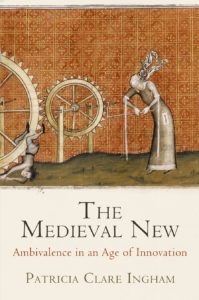Podcast: Play in new window | Download (Duration: 59:00 — 81.0MB)
 It’s December 29th. For our last show of 2020 we’ll turn back to a program from July 2015 as an attempt to hit the reset button. While the book of Ecclesiastes laments there’s nothing new under the sun, the Middle Ages lights the way for the old to become new again. We need to find what works and put it to renewed use.
It’s December 29th. For our last show of 2020 we’ll turn back to a program from July 2015 as an attempt to hit the reset button. While the book of Ecclesiastes laments there’s nothing new under the sun, the Middle Ages lights the way for the old to become new again. We need to find what works and put it to renewed use.
***
Popular models of innovation (including buzzwords such as “creative destruction” or “disruptive innovation”) prize getting rid of anything that’s old. But some folks are starting to reimagine innovation in different terms: as reusing, recycling, refurbishing, sampling, or updating the old. In her new book, The Medieval New, Patricia Ingham shows that creative models combining old and new have a long and interesting innovating history. Focusing on the period that gave us eye glasses, windmills, courtly love, and mechanical clocks, (not to mention falconry and the blast furnace), Ingham asks us to reconsider what we think we mean by calling something new.
I. Rethinking “new” as opposed to the “old”: how the medieval question was organized differently (not old versus new but ingenium vs. consuetudo, so inborn, though idiosyncratic, talent vs. convention, or things generally agreed upon); “cultures of artistic copying”– creative works were not a completely “original” poem or story, but a work engaged with, updating, reworking, or repurposing stories or poems long admired; things “discovered” not made out of nothing; creativity as an engagement with tradition as well as “environment.”
II. Medieval ambivalence about “newness” on account of questions of Ethics: both in medieval literature and art where newfangledness is regularly used as an ambivalent term. Ambivalence and its definition: as simultaneously, or possibly, loved, but also possibly hated, etc. In contrast to today where too often people assume that anything “new” is, by definition, good, what we want, etc.; historians of science and technology who don’t all see the path of history as one of unrelenting “progress.”
III. Innovation and the University: We are said to be currently in an Age of Innovation–but we don’t always think too hard about what innovation entails. The University as an institution has long drawn together both strands of the “medieval new”: histories of re-reading, remaking, repurposing; but also ingenious solutions to long standing problems, concerns.
 GUEST
GUEST
Patricia Ingham, Professor of English and Medieval Studies at Indiana University and Editor of Exemplaria: A Journal of Theory in Medieval and Renaissance Studies, and author of The Medieval New: Ambivalence in an Age of Innovation.
RELATED
Innovators are killing us by John Patrick Leary
The Disruption Machine by Jill Lepore
MUSIC
The Hilliard Ensemble, “O Livoris Feritas, M9″ (Guillaume de Machaut)
Nice & Smooth, “Old to the New”
Derek and the Dominoes, “Layla”
Us3, “Cantaloop (Flip Fantasia)”–sample Herbie Hancock’s “Cantaloupe Island”
Madlib, “Slim’s Return”–originally recorded by Gene Harris & The Three Sounds as “The Book of Slim”
CREDITS
Producer & Host: Doug Storm
Studio Engineer: Joe Crawford
Executive Producer: Kade Young
 WFHB Bloomington Community Radio
WFHB Bloomington Community Radio


